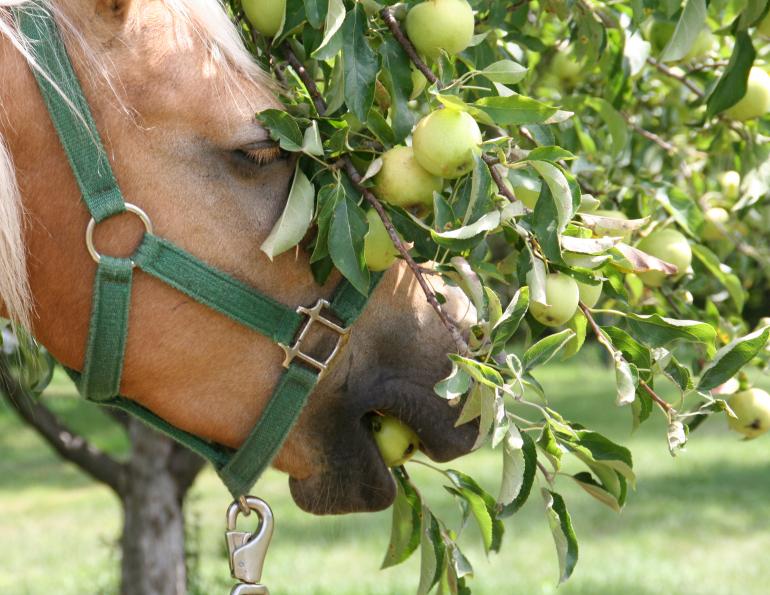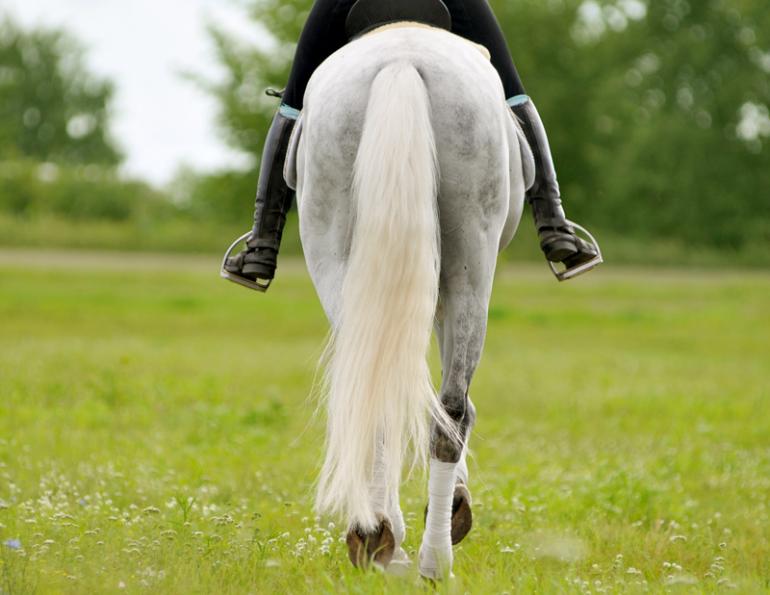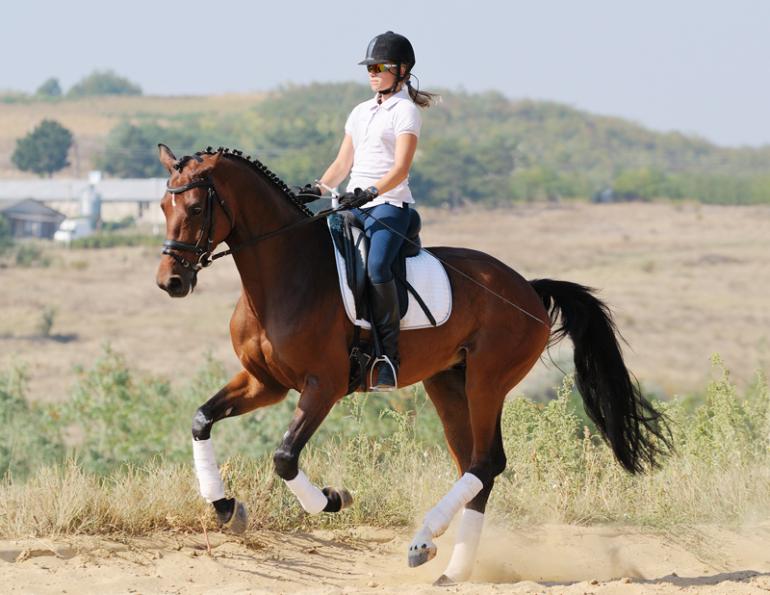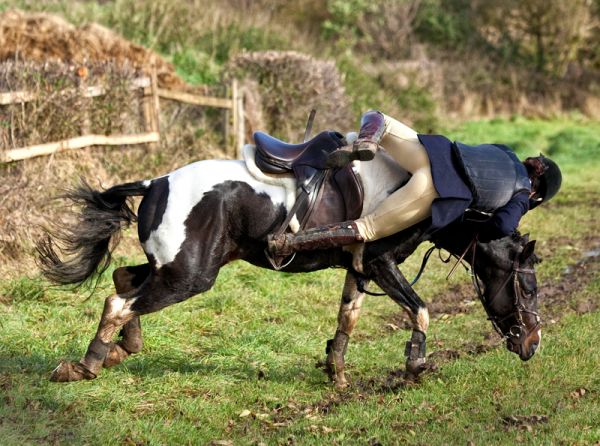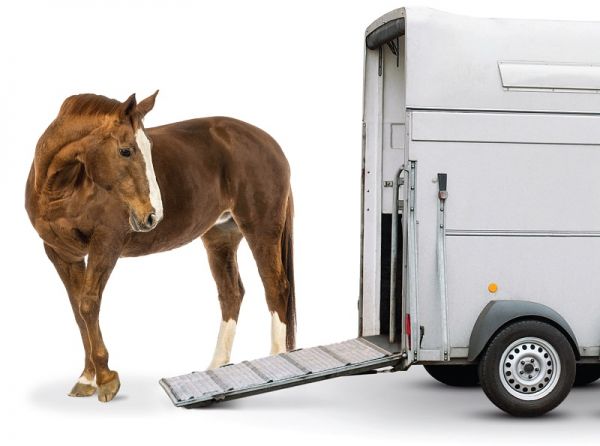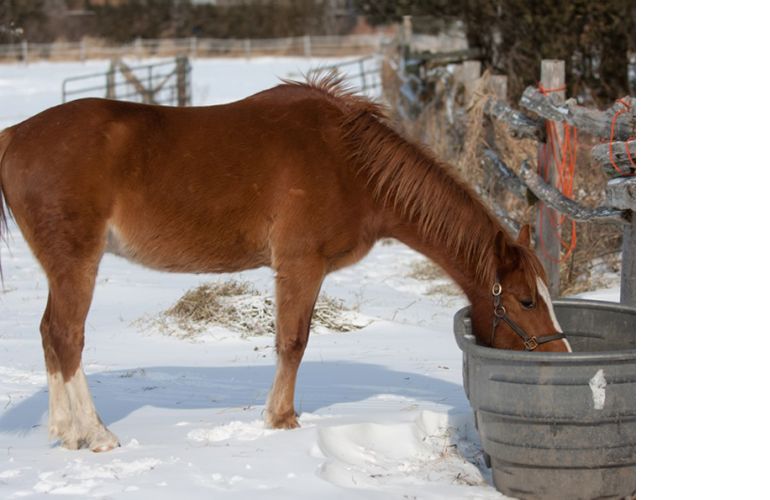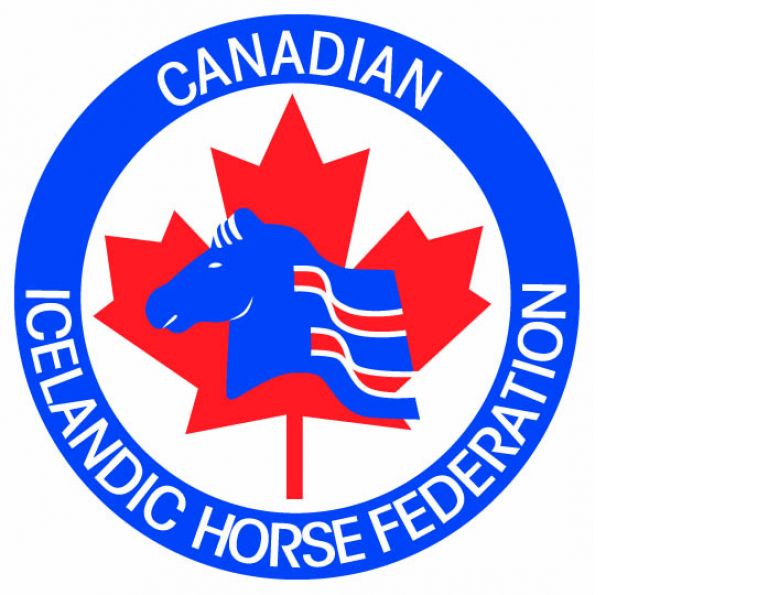Falling Off a Horse is a Crucial Every Equestrian Should Know
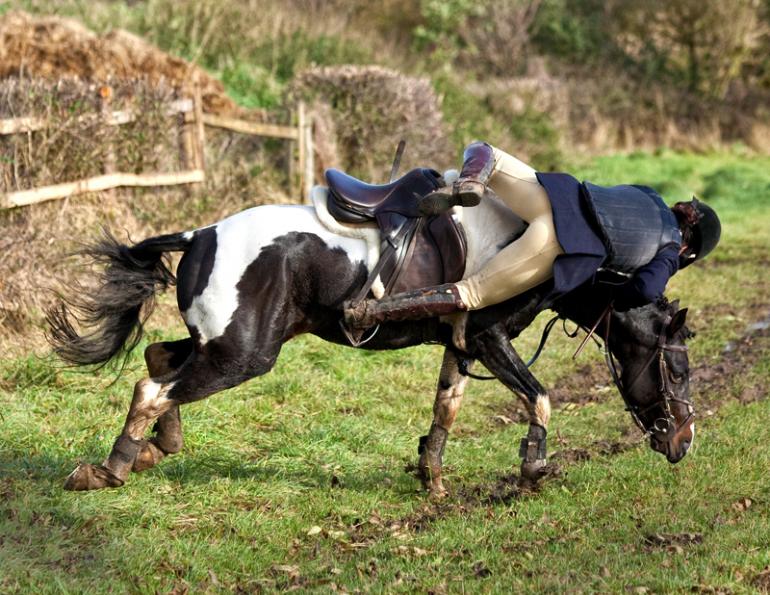
By Jec A. Ballou
While most riding lessons focus on techniques for controlled riding, one important skill often goes overlooked: falling off the horse. Also known as the unscheduled dismount, this maneuvre is something nearly every rider encounters at some point. Whether it's due to an unexpected buck, loss of balance, or other unforeseen circumstances, falling off of a horse involves quickly and deliberately exiting the saddle—usually at high speeds—before hitting the ground.
How a rider handles a fall often depends on personal preference. Some riders may try to maintain their grip on the reins as they descend, others may attempt a two-footed landing, and some instinctively curl up and roll. After experiencing a fall, riders often develop their own “signature” maneuvre. For many, the emergency dismount becomes a badge of honor, a reminder that they made the best decision in a difficult situation. Instead of staying aboard and risking further injury, they bailed out, proving their quick thinking in the face of danger.
Despite its inevitable humor and pride, falling off a horse is never a pleasant experience. It’s often accompanied by thoughts of fear or even life-threatening concerns, with many riders wondering, "Is this how it ends?" In truth, most riders prefer the smooth, rhythmic motion of riding to the chaotic, unpredictable experience of being airborne. After all, few would choose to take a flying leap to the ground over staying in control of the reins.
Equestrians know that the goal is always to remain in the saddle, but knowing how to handle an emergency dismount is just as essential for rider safety.
For obvious reasons, the emergency dismount is a major bummer. Not only does it bang you up but it bruises your ego, too. When your barn mates ask how your ride went, you hate to answer, “Well, things didn’t go quite as planned…” In my lifetime around horse people, though, I’ve observed that after a few initial hours of feeling embarrassed and battered, riders use the mishap to explore the reaches of metaphor. Put simply, they start bragging. In fact, they end up bragging about the unscheduled dismount more than they would about a perfectly flawless ride.
It starts innocently enough with the rider admitting to his or her coach that, after an unexplained something or other spooked her horse, she decided to bail off. Then later she tells the same story to her friend, except embellishes it with a colourful detail like this: “At first, I hit the ground running, but then I figured I’d tuck and roll, because why not? Well, after the roll, I was right back up on my feet.”
Later that afternoon, she retells the story to a group of fellow riders, adding a little more flare: “After somersaulting through the air, I ended up on the other side of the arena fence, but I broad-jumped back into the arena, ran alongside my horse, grabbed his reins…”
By the time, the story reaches its final version, the rider performed a stunt that involved hitting the ground and then somersaulting under the horse’s galloping hooves, then she sprang back up on her feet and swung her leg up (while sprinting at Olympic speeds, mind you) and did a flying re-mount onto her horse. So, basically, she never dismounted in the first place. Not only was there less shame in this version of the day’s happenings because it maintains the guise of control, but it was so grossly exaggerated that her friends thought Hollywood would be calling for stunt training any second. In sum, it was far more exciting – and in some ways, fruitful – than just another day in the arena.
Admittedly, I’ve spun my own fanciful tales about emergency dismounts. I’ve added a fictional somersault here and there, exaggerated the speeds of the occurrence, etc. I mean, it’s just a lot better than saying that things got bad and I jumped off. So, now as a trainer, I know to believe only a fraction of what follows when a student starts saying, “Well, things didn’t go quite as planned…” And for this reason, I think I’ll petition the American Riding Instructors’ Association to develop standard operating procedures for these emergency dismount maneuvers. I’m envisioning something like this:
Step 1 – Admit things are getting bad quickly;
Step 2 – Recognize that you are neither John Wayne, a circus trainer, nor a rodeo rider;
Step 3 – Say a Hail Mary and jump! Forget about gymnastic routines, cartwheels, or other heroics.
To read more by Jec Ballou on this site, click here.
Main photo: Photo: Shutterstock/Steve Horsley




